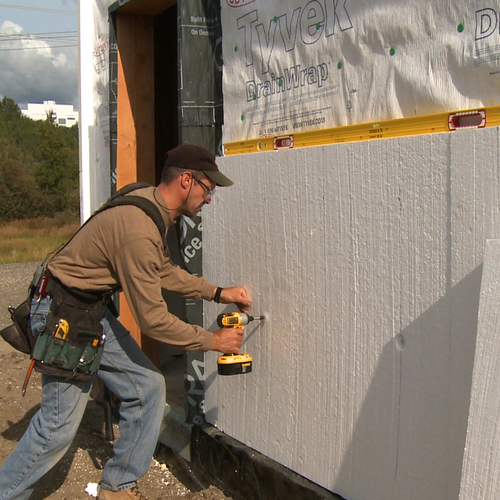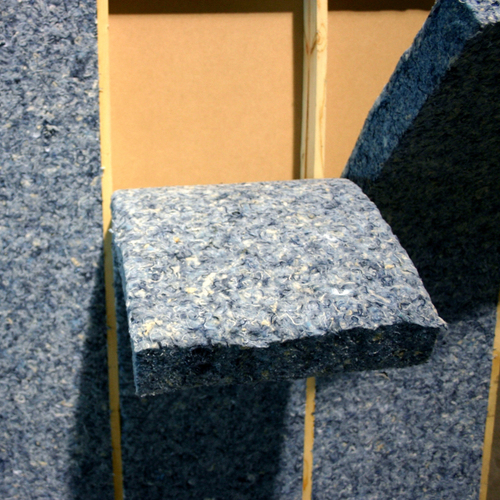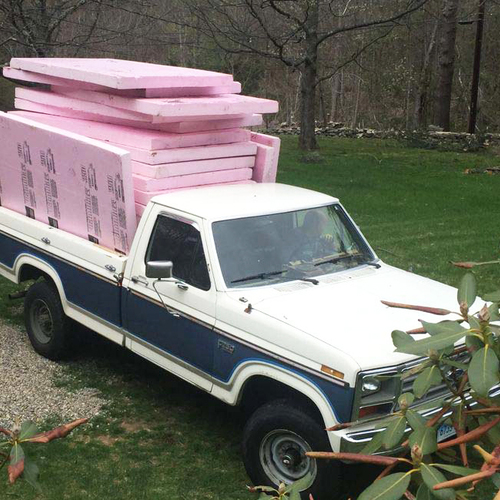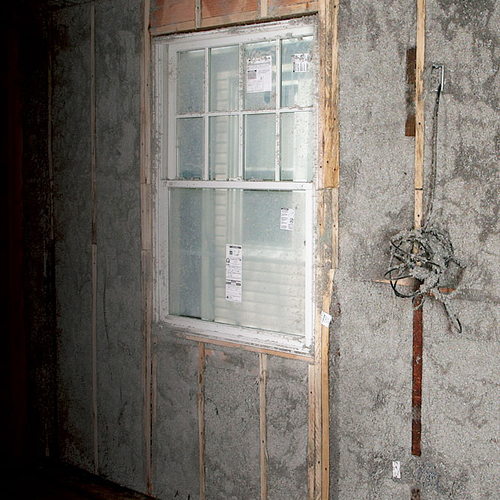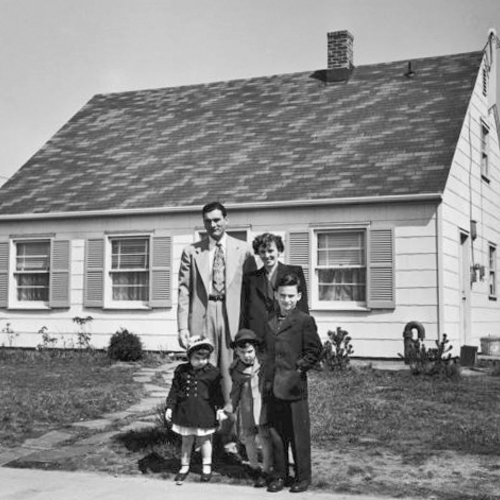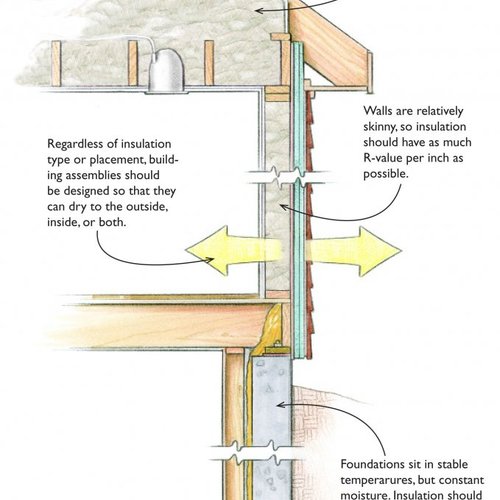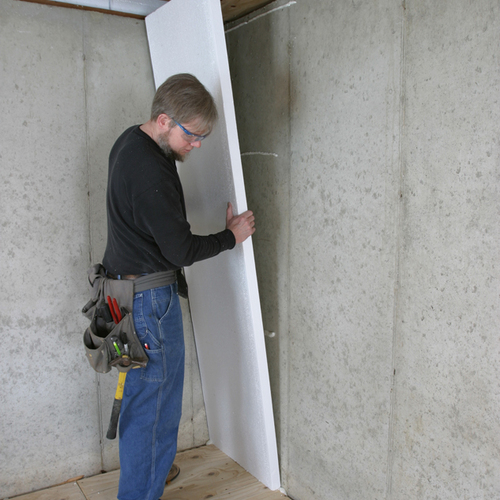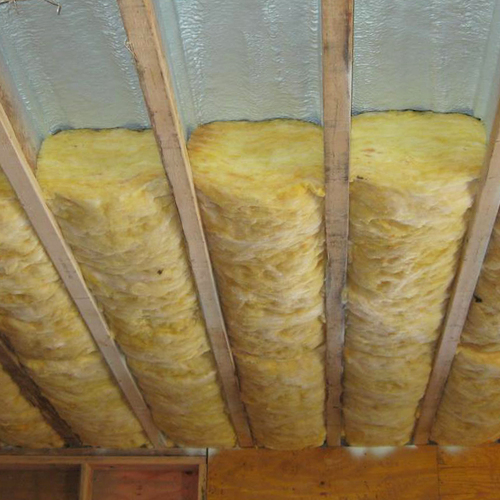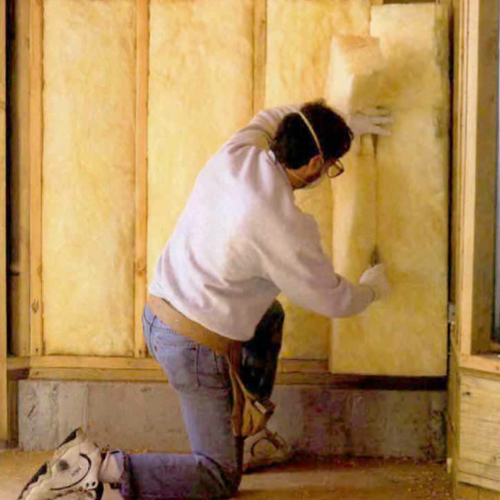
This is a list of some of the most important GBA articles on insulation.
If you are looking for an index that spans all categories, with a special focus on “how to” articles, check out this resource page: “How to do Everything.”
-
Insulation Overview
The Job of Insulation Is to Slow Heat Flow UPDATED 11/16/2012
-
Insulation Choices
The Right Insulation Choice Depends on the Job at Hand UPDATED 11/16/2012
-
How Much Insulation is Too Much?
To reduce future energy bills, some builders are willing to include above-code levels of insulation. Each additional inch of insulation saves energy — but with each additional inch, the savings per inch diminishes. At some point, the cost of adding more insulation because hard to justify.
-
How Much Insulation Is Enough?
I'm often asked the question, "How much insulation should I install in my house"? It's a great question. Let me offer some recommendations: First of all... it depends. It depends to a significant extent on where you live. And it depends on whether we're talking about a new house or trying to squeeze insulation into an existing house. To simplify the discussion, let's assume, for the time being, that we're talking about new construction
-
How Much Insulation is Needed?
Standard residential construction in much of the country is 2x4 framing with fiberglass insulation, achieving a paltry R-10 or so in the walls. If insulation is installed at all on the foundation walls, it’s rarely more than an inch thick, and insulation is almost never put under slabs. In Vermont, we typically do a lot better. Act 250, enacted nearly four decades ago, required developers to improve energy performance and that led to a widespread switch to 2x6 framing in home building.
-
Batt and Blanket Insulation
Inexpensive and Easy to Handle, Batts are The Most Common Insulation UPDATED 8/21/2012
-
Insulation Materials – The Basics
There is no component of a home more important in minimizing energy costs than insulation. Insulation is the material used in walls, ceilings, roofs, and foundations that slows the flow of heat.
-
How to Insulate an Attic Floor
Maybe you are building a new home with an unconditioned vented attic. The house is framed, sheathed, and roofed. The drywall contractors have finished their work, so now you’re ready to insulate the attic floor. If you are an owner-builder, this may be the first time you’ve done this. So what do you need to know?
-
Insulating With Damp-Spray Cellulose
Insulating any building can be a challenge, but the nonprofit energy-efficiency and weatherization company I work for, Community Environmental Center, frequently insulates old houses being rebuilt for residential group homes and elderly housing in New York City. These skilled-care buildings, like the one shown in these photos, are crammed with pipes, ducts, and wires, so they’re tough to insulate. They’re also located in dense urban neighborhoods that can be busy and loud.
-
Insulating a Cape Cod House
If you own an older Cape Cod home, you have my sympathy. If you’re the type of homeowner who regularly tackles DIY projects, you’ve probably spent weeks chasing air leaks with a foam gun, lying on your back in a cramped attic. And there's a good chance that, in spite of your efforts, your house still suffers from ice dams. I’m sorry for your troubles. You deserve better. If you are thinking of building a new Cape, it’s not too late to get the details right — as long as you’re still at the planning stage.
-
Insulating a New House
An owner-builder planning a new home in southern Ontario isn't looking for a net-zero house, just one that's well insulated and protected from moisture problems. The question is whether his proposed wall system is his best option. "I'm unwilling to put foam board on the outside and vapor barrier on the inside," writes User 6782048, whom we'll just call Ontario, in a question posted on our Q&A page. "Just seems wrong."
-
Insulating an Exposed Floor
A GBA reader who calls himself “Mr. Mike” is working on an 11-ft. by 14-ft. addition to his house in central New York that sits some 5 feet off the ground. The space beneath the addition is a great place to park a lawnmower, but it's also open to the cold.
-
Insulating Roofs, Walls, and Floors
Choose the Right Insulation for Each Part of the House UPDATED 4/12/2013
-
Insulating Low-Slope Residential Roofs
UPDATED on April 8, 2016 There are lots of ways to insulate a low-slope roof, and most of them are wrong. In older buildings, the usual method is to install fiberglass batts or cellulose on top of the leaky ceiling, with a gap of a few inches (or sometimes a few feet) between the top of the insulation and the roof sheathing. In some cases, but not all, there is an attempt to vent the air space above the insulation to the exterior.
-
Insulating Walls in an Old House With No Sheathing
When the owners of an old wood-framed building say that they’re doing a “gut rehab job,” that usually means that they’re demolishing the lath-and-plaster walls to expose the studs — the first step of renovation work that usually includes new wiring, new plumbing, and new insulation.
-
How to Insulate a Basement Wall
Here at GBA, we regularly receive questions from readers about the best way to insulate a basement wall. Since these questions pop up frequently, it’s time to pull together as much information as possible on this topic. In this article, I’ll try to explain everything you always wanted to know about insulating basement walls.
-
How to Build an Insulated Cathedral Ceiling
UPDATED on May 31, 2018 with information on the cut-and-cobble method. Although the GBA website already contains many articles on the topic, we continue to receive frequent questions about the best way to insulate a cathedral ceiling. It’s therefore time to pull together as much information on the topic as possible and publish it in one place, to clarify the building science issues and code requirements governing insulated sloped roofs.
-
Flash-and-Batt Insulation
Closed-cell spray polyurethane foam insulation has several desirable characteristics. It’s an excellent air barrier, an excellent vapor retarder, and it has a high insulating value per inch (about R-6). Unfortunately, it’s also expensive.
-
Cut-and-Cobble Insulation
Here at GBA, readers regularly ask about the best way to install rigid foam insulation between studs or rafters. A typical question might go like this: “I’d like to insulate between my studs with strips of 2-inch-thick polyiso. I plan to cut the rigid foam pieces a little bit loose, and seal the edges of the polyiso with canned spray foam. Will this work?”
-
How to Install Cellulose Insulation
In some parts of the U.S. — notably northern New England — cellulose insulation has been widely used for more than 30 years. In other parts of the U.S., however, cellulose insulation is just beginning to gain traction. Of course, cellulose insulation is installed with different techniques than those used to install fiberglass batts or spray foam. To help explain these techniques to builders who are unfamiliar with cellulose, we decided to interview Bill Hulstrunk, the technical manager at National Fiber, a manufacturer of cellulose insulation in Belchertown, Massachusetts.
-
Installing Fiberglass Right
Of all of the commonly used types of insulation — including cellulose, rigid foam, and spray polyurethane foam — fiberglass batts perform the worst. As typically installed, fiberglass batts do little to reduce airflow through a wall or ceiling assembly; rarely fill the entire cavity in which they are installed; and sometimes permit the development of convective loops that degrade insulation performance. Knowing this, why would any builder choose to install fiberglass batts? The answer is simple: because fiberglass batts cost less than any other type of insulation.
